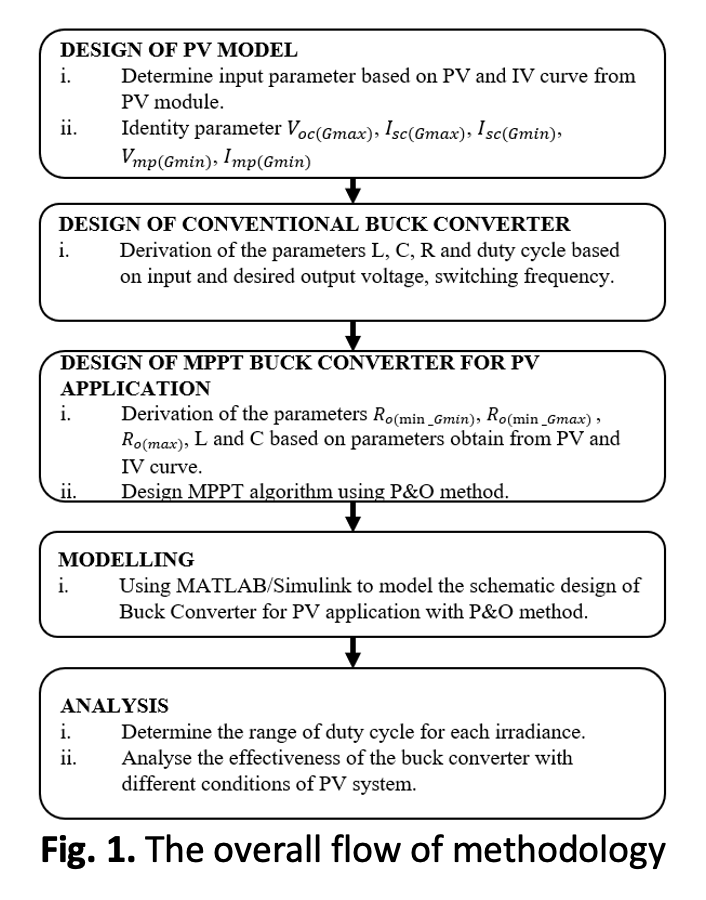Design of Buck Converter Based on Maximum Power Point Tracking for Photovoltaic Applications
DOI:
https://doi.org/10.37934/araset.39.2.242257Keywords:
PV system, MPPT, buck converter, P&OAbstract
e MPPT converter ensures that the PV system operates at the maximum power point, which is the point where the solar panels can generate the most power. This is done by adjusting the voltage of the output. The converter uses a DC-DC conversion process and can be implemented using a buck converter circuit. This project uses a buck converter to adapt the voltage to its appropriate value to reach a maximal power extraction. This power converter can be designed in several ways. This involves employing a typical power converter design to create the power converter in the MPPT converter. Furthermore, the inductance and capacitance derivation for the MPPT converter is insufficient, making determining the inductance and capacitance unfeasible. Hence, this study focuses on designing the buck converter for MPPT application and tracking the maximum power using the Perturb and Observe (P&O) method. This system will be implemented by using MATLAB/Simulink. To design the MPPT buck converter, several parameters need to be considered and derived. This project finds that the MPPT buck converter that has been designed can track the maximum power from 900 W/m2 to 1100 W/m2 of irradiance. The design of the MPPT buck converter using the P&O method is fairly accurate, and the accuracy of tracking the maximum power is around 98%.Downloads

Downloads
Published
2024-02-13
How to Cite
Nornaim Kamarudin, Ahmad Asri Abd Samat, Mohammad Faridun Naim Tajudin, Muhammad Khusairi Osman, Saodah Omar, & Irni Hamiza Hamzah. (2024). Design of Buck Converter Based on Maximum Power Point Tracking for Photovoltaic Applications. Journal of Advanced Research in Applied Sciences and Engineering Technology, 39(2), 242–257. https://doi.org/10.37934/araset.39.2.242257
Issue
Section
Articles




























